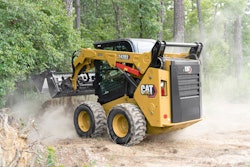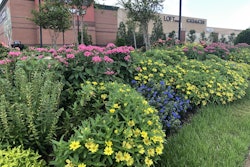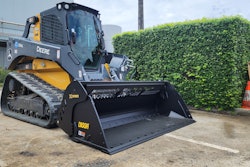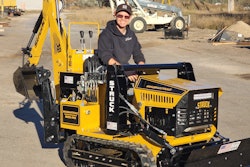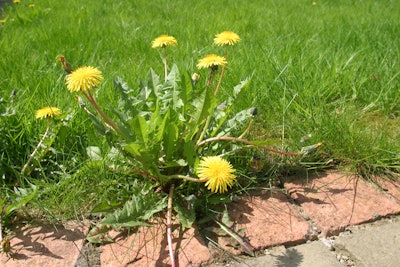
One in particular you should take care to evaluate is your weed control program. While it may be tempting to simply treat a customer’s property when weeds appear, it’s a best business practice to focus on cultural lawn care maintenance before jumping straight to using herbicides.
 Rob Golembiewski
Rob Golembiewski“To maximize weed control, lawn care operators (LCOs) must understand the reason for the weed presence,” says Rob Golembiewski, Ph.D., Bayer Green Solutions Team. “Some still believe that weeds cause poor turf performance but in reality, the weeds are the result of poor turf performance. Cultural practices need to be addressed first or in conjunction with an effective herbicide program. After discussing cultural practices with the customer, choosing the correct herbicide and rate along with the correct application timing and technique are all critical for successful weed control.”
The most common way to lose money with your weed control program is by simply having poor weed control, which often results in complaints and expensive call backs.
To ensure your program is profitable, you must make sure you are following best practices when it comes to using both pre-emergence and post-emergence herbicides. Using a combination of both types of herbicide can maximize weed control.
While a properly applied pre-emergence herbicide may not require post-emergence applications for four years in a row, weather can throw a wrench into matters.
Since most lawn care operators assemble their agronomic programs in the fall and schedule their applications on a 6 to 8-week cycle, depending on the number of customers and routes, a warm winter 30 days earlier than normal can result in some pre-emergent applications being too late. A post-emergent application would be needed in this case.
“Another scenario is a year with above normal rainfall or extended summer/fall season resulting in weed breakthrough and the need for a rescue application,” Golembiewski says. “Yet another scenario for a post-emergence herbicide is picking up a customer mid-season with a lawn full of weeds.”
Misconceptions about pre-emergence and post-emergence herbicides
One way to make sure you have an effective weed control program is to have the correct understanding of what pre- and post-emergence herbicides are capable of and effective at.
A common mistake when it comes to pre-emergence herbicides is believing that all of them provide equal control and residual activity.
“When it comes to pre-emergence herbicides, there are a number of different chemical classes represented by the active ingredients,” Golembiewski says. “Each product may have a slightly different spectrum of activity depending on the weeds to be controlled.”
Another misconception is the belief that if you use pre-emergence applications, there is no need for post-emergence herbicides. Golembiewski says that since LCOs cannot control Mother Nature, there is always the possibility they will need to control weeds after they germinate.
“Pre-emergence herbicides are only effective on weeds prior to emergence so they are effective primarily on annual grasses and occasionally annual broadleaves,” he says.
As for post-emergence herbicides, it is foolish to believe that just one application will cut it when it comes to controlling weeds.
“There are many difficult perennial weeds that may require multiple applications to achieve complete control,” Golembiewski says. “For example, multiple-tillered crabgrass may require multiple applications and/or later germinating crabgrass may not be controlled with the initial application.”
Another misunderstanding that can occur is believing that all turfgrasses species are safe from post-emergent herbicides. Yet targeting a grass within a grass is tricky business.
“Always read the label prior to making an application and ensure that the turfgrass species is listed for turf tolerance,” Golembiewski says.
While adjuvants can help lawn care operators use less herbicide while maintaining its effectiveness, they shouldn’t necessarily be used with every herbicide application. Golembiewski advises reading the label once more to see whether an adjuvant is suggested, if it is already in the formulation or specifically recommended not to be used.
“Always try to keep mixtures as simple as possible to minimize risk to the desired turf species,” he says.
Choosing the right chemicals for a control program
Obviously, a weed control program is only as effective as the chemicals you use, so it is important to take into account your location, which weeds you’re dealing with and what herbicides are the most practical.
“In addition, LCOs should continue to attend university turf field days and educational seminars to learn about evolving weed issues, new herbicide products and new innovative control strategies with existing herbicides,” Golembiewski says.
LCOs should also be mindful of which plants are most susceptible to potential injury when treating a property.
“When applying herbicides, LCOs should attempt to minimize spray drift near non-target plants by selecting the proper nozzles, using a spray drift guard or avoiding application during consistently high winds,” Golembiewski says. “In addition, LCOs should constantly be evaluating new herbicides entering the market for broader weed spectrum activity and less injurious effects on landscape plantings.”
As for whether granulars or liquids are better to use, Golembiewski says both formulations have their place.
“Granular or fertilizer/herbicide combinations make sense early in the spring for pre-emergence application because cold weather in the northern U.S. could make liquid applications difficult or impossible,” Golembiewski says. “Furthermore, granular products are (mis)perceived by onlookers as much safer than liquids. However, liquid formulations are more flexible since multiple active ingredients can be included in the tank.”
Golembiewski adds that liquids tend to be less expensive thanks to water being the carrier, while granular formulations tend to have a fertilizer or clay carrier.
“Liquid herbicide applications in general will be more profitable due to the cost of the respective products,” he says.
When it comes to using nonselective herbicides, lawn care operators should first assess the turfgrass, soil quality, thatch level, environmental conditions and existing perennials weeds.
“If the turfgrass stand is in poor condition or the environment is unsuitable to support turf growth, then renovation is needed and starts with the application of a nonselective herbicide like Roundup to kill the existing turf and weeds,” Golembiewski says.


